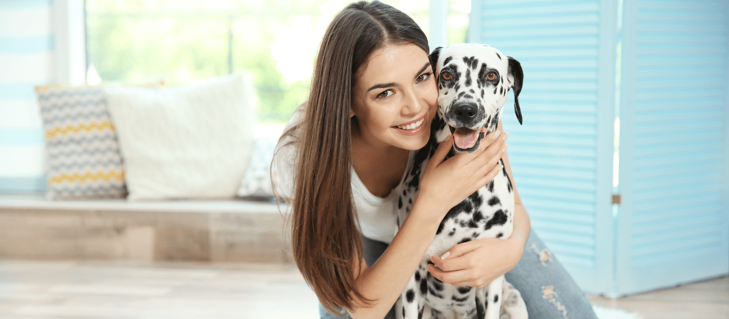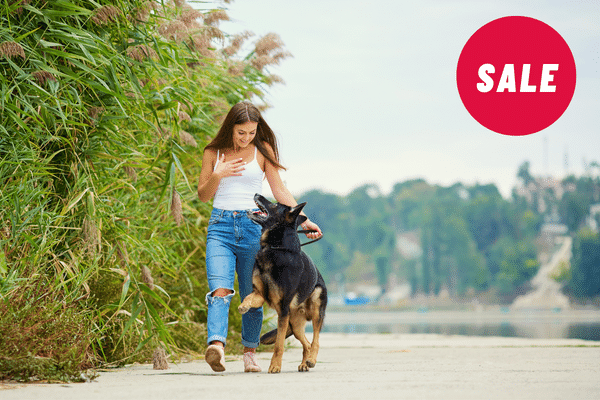
9 Myths About Dog Behaviour Training
9 Myths About Dog Behaviour Training
Think that your dog looks guilty when you discover him chewing your shoe? Or convinced that your dog is messing on your brand new carpet just to get back at you?
Discover 9 of the most common dog behaviour training myths and learn why they are simply not true!
This is essentially saying that when someone who speaks a different language to us doesn’t understand what we are saying, they are trying to show they are better than we are or they are stupid.
This is simply not true. Firstly, the concept of ‘dominance’ as many people (and sadly, trainers) still use it is incorrect. And secondly, dogs want to learn. They want to please us. They want to be mentally stimulated. But just like humans, some dogs will pick up things more quickly than other dogs. Chances are good you are not going to be able to train a Bulldog as quickly as a Border Collie. But the onus is on us as humans to communicate clearly in a way the dog will understand. This includes utilising correct timing. Often, the way we react to a certain behaviour actually reinforces it. So many of the perceived faults in a dog’s behaviour are actually a result of our miscommunication with them.
For example;
- When a dog jumps up on you, you may shout or push them away.
- When dogs play, they will often jump up against each other with their paws. When you push them away without the proper training technique, it may seem like you are joining in the fun, and they will repeat the behaviour.
- Dogs will jump, nip, bark or dig because they have not learned that those are undesirable behaviours. To them, these actions are perfectly normal, just like leaving your shoes on when you come inside is perfectly normal in some countries, while in others it is polite to leave them at the door. And well, when in Rome. So from your dog’s point of view; you are Emperor of Rome.
Make sure that you reward the desirable behaviour only. Look at it from your dog’s point of view. Are you giving the right cues at the right time? Is the reward proportional to the task? Does the task make your dog fearful? Understanding and reading your dog’s behaviour is just as important as your dog understanding and reading your behavioural cues.
There is no truth to the age-old saying ‘you can’t teach an old dog new tricks’. Just none. So let’s get that out of the way.
The truth is you can train a dog at any age. The only difference is that teaching an older dog a new habit may take a bit more time and patience, because the old habits have been ingrained. But older dogs are also capable of more focused attention and prolonged concentration. Learning about your new dog and teaching him about yourself will bridge any gap in trust a new relationship may bring.
Positive reinforcement has been used to train dolphins, bears, horses, whales and gorillas. All of which are bigger than a dog!
All dogs, regardless of size, are trainable using positive reinforcement. Of all the training techniques, it is the one with the least amount of negative side-effects and threats to the relationship with your dog. The more aversive training methods can even lead to worsening of behavioural traits, especially in fearful or aggressive/stubborn dogs.
This is incorrect.
All learning efforts are motivated by a reward. This applies to humans and animals alike. Understanding the new sales pitch and putting it into action at work will earn you accolades and even a bonus. Dogs are the same. Food is most often used as a reward because dogs love food and it is accessible and easy to deliver.
There are many things that can be used as a reward such as;
- Toys
- Touching
- Praise
- Even activities such as a car ride or walk in the park
The reward is there not to bribe the dog to do something, but to reward their behaviour so that they know they got it right! Most importantly, it gives the dog a desirable sensation that they can link causally to the behaviour which earned it. The reward should be seen as positive feedback, not a bribe.
Dogs do not wake up in the morning and go “what can I do to upset my human today?” When a dog messes on your carpet it could be for a variety of reasons.
The first to rule out is a medical condition. Urinary tract infection (UTI) or incontinence can cause involuntary urination. Another reason could be that he is anxious or distressed. This could be due to a change in circumstances in the home or separation anxiety. He might also not be fully house-trained or he may have been left indoors for longer than his bladder could handle.
It can be said that one of the biggest flaws dogs have is their innate trust and affection for humans. Stories of dogs that have been beaten and still return to their abuser and remain loyal abound. So the idea that your dog has been plotting all day and decides to urinate on your kitchen floor to get back at you for something you have done is not a likely scenario.
Fact: feeding your dog from the kitchen table (even if it is dog treats or kibble!) will cause your dog to beg at the kitchen table.
He associates the table with food in general, not a specific type of food. If your dog has started begging when you sit down to a meal, it’s up to you to discourage the behaviour using the correct training methods.
We tend to anthropomorphise our dog’s actions. Dogs are capable of a variety of emotions, but the exact extent and similarity to humans is still up for debate.
However, studies have shown that the dog’s expression that humans mistakenly assume is a ‘guilty’ look can sometimes be a projection of what WE want to see in the dog. A ‘guilty’ look means that the action has already taken place long enough ago for you to have time to look at the dog’s expression. This means the dog is now reacting to your body language, not to the crime he has committed against your carpet.
This is simply not true.
Many trainers even use this game as a reward for getting a task right. Dogs enjoy it and it is great fun and exercise for us humans too! The key is to moderate the game in such a way that it does not get out of hand. Your dog should never bite you during the game and you should be able to end the game without a fuss. If this does not happen, training is required on your part to teach your dog the desired behaviour.
Understanding how dogs learn will help us figure out how to teach them. Using a training method that is not based on a dog’s learning ability will be of no use and will simply cause frustration for both you and your dog. Also, make sure you do your research. Do not buy into the various myths about a dog’s learning ability or behaviour. Educating yourself will make you better equipped to educate your dog.
This myth originated in a time when dogs were trained using only very physical methods such as choke collars. So the dog would need to be old enough and strong enough to endure that kind of handling.
Today, positive reinforcement can be used easily, effectively and safely on even young puppies. Puppies will require more patience as they have a relatively short attention span, but the sooner you start, the sooner they will learn. Socialisation is a vital step in a dog’s life. Training your dog from a young age can be a great way to kick-start the process.

